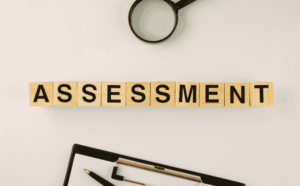No products in the cart.

IEP stands for Individualized Education Program. Many students with disabilities are eligible to receive IEP services in American schools, and about 15% of all students have one. There is no set formula for what an IEP should look like. It must be customized for the child’s abilities and needs by nature. IEPs change from year to year because as children grow and develop, their needs change. The trouble is, without a standard document to compare your child’s IEP to, how can you know if the document is adequate? Several things will stand out as red flags on a poorly written IEP:
Your input as a parent is not included
Perhaps you did not see a draft of the IEP before the meeting. Someone may have just read the draft aloud with little collaborative discussion amongst the team. There are no mentions of concerns you raised at the meeting on the final copy. Perhaps you were not asked to share your concerns at all. There are sections on the IEP specifically for academic, developmental, functional, social, and physical development needs of parent concern. You should be asked for input before or during the IEP meeting, and someone should note your concerns on the final document. You can even bring a written statement to the meeting containing ideas about your child’s present performance and needs. You can request these comments be included in the final copy.
The Present Levels section does not resemble your child
Towards the top of every IEP is a section that identifies the child’s present performance levels. Would you recognize your child if you only read this description with the name redacted? The Present Levels section of the IEP is essential because it determines what goes on in the rest of the IEP. It should be an accurate and recent description of how your child performs when faced with academic tasks in various subjects. Since IEPs are based on needs, the rest of the document will be based on those deficits listed in the Present Levels. This part must be very specific to your child’s current level of functioning.
The IEP Goals are not meaningful or measurable
Your child’s goals should be based on the needs listed in the Present Levels of Performance section. They should be specific, measurable, achievable, relevant, and time-bound. IEP goals shouldn’t be vague. An appropriate goal also states when and how often your child’s progress will be measured. The teacher should be able to measure goal progress by standardized tests, curriculum-based measurements, or screenings.
You haven’t received reports about Progress Monitoring
A section on your IEP regarding progress monitoring tells what reports you should expect to obtain and when. Reports on your child’s progress are often sent at regular intervals with report cards. Check if you have been kept aware of the progress your child is making towards their goals. The team should reconvene to discuss and adjust the IEP if the reports show minimal progress. You may also request the raw data collection sheets at any time to ensure the teacher is collecting appropriate data, and you may wish for this verbiage to be included in the IEP document.
How Do I Fix a Bad IEP?
- Make a solid effort to participate actively on the IEP team. It is easy for the team to make decisions without including the parent, so long as the parent is not engaging in all parts of the IEP process. Educate yourself before the meeting and bring an advocate if you feel overwhelmed. Strategies for Learning has many clinicians who can help you navigate the process and even attend your IEP meeting to ensure the document is carefully and appropriately drafted.
- Make sure progress monitoring is a priority for the teachers. IEP progress monitoring measures performance in a specific area and should be checked frequently. As a parent, you must receive regular progress reports to understand how the child is progressing. The team should also use these reports to make decisions about any changes or revisions necessary to the child’s IEP before the next meeting.
- Learn about SMART goals and have some goal suggestions ready before the meeting. It is not your responsibility to write the IEP goals. However, you should know your child’s goals and help ensure they are measurable and meaningful. Tracking the goals and providing valuable suggestions helps you keep the team accountable for your child’s progress.
- Prepare for your IEP meeting. Strategies for Learning can help you prepare for your next IEP meeting. Contact us for more information.
Written by Stephanie Broytman, M.A.
Schedule a free phone consultation
You can schedule a free initial consultation to learn more about our Educational Services. We will listen to your concerns, answer any questions, learn about the student’s needs, and help guide you through our new student intake process. Contact Us.







No comment yet, add your voice below!